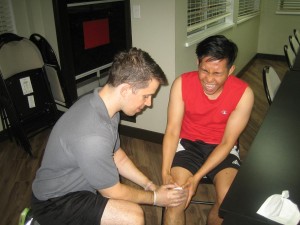When caring for minor wounds, there are 2 forms of healing methods – moist healing and dry healing.
https://www.youtube.com/watch?v=yuLK7mgr318
With the moist wound healing method, it involves using damp protective covers to promote the healing process. This method prevents scabbing and promotes the regeneration of new skin cells with the help of the liquid that drains from the wound.
As for dry wound healing, it allows the wound to be exposed to the circulation of fresh air which promotes healing and allowing it to dry out during the scabbing process.
Steps in drying out wounds

- Place pressure on the wound using a clean cloth or piece of gauze to stop the initial bleeding. Once the blood saturates the initial layer of gauze, simply place a new piece on top of the first layer.
- You should continue to apply pressure for around 20-30 minutes or until the bleeding ceases. Remove the gauze carefully after and rinse the wound using cool water to flush out any debris or dirt.
- Wounds should be blotted dry using a clean, dry piece of gauze. Dab on a thin coating of antibiotic ointment on the site of the wound with a cotton ball.
- Make sure that wounds are covered with another dry, clean piece of gauze that is secured with a medical adhesive tape. Take note that the dry gauze will absorb any liquid that drains from the wound, resulting to the formation of a scab.
- The dry gauze must be replaced once a day. Make sure that the wound is wrapped with dry gauze until a scab starts to form which usually occurs within 1-2 days.
- Allow the wound to stay exposed to the air until the scab forms. Remember that the healing will occur beneath the scabbed site.
Always make sure that the skin bordering wounds are cleansed with soapy water and soft washcloth if there are any leftover debris or dirt after the rinsing. Nevertheless, make sure that soap will not enter the wound.
Avoid applying a wet dressing on the wound. The wet dressing prevents the wound from completely drying out. In case the wound continues to bleed, seek medical care right away.
Quick Note / Disclaimer
The material posted on this page on wound care is for learning and educational purposes only. To learn more about ways to dry a wound, register for a first aid and CPR course with Ottawa First Aid.
